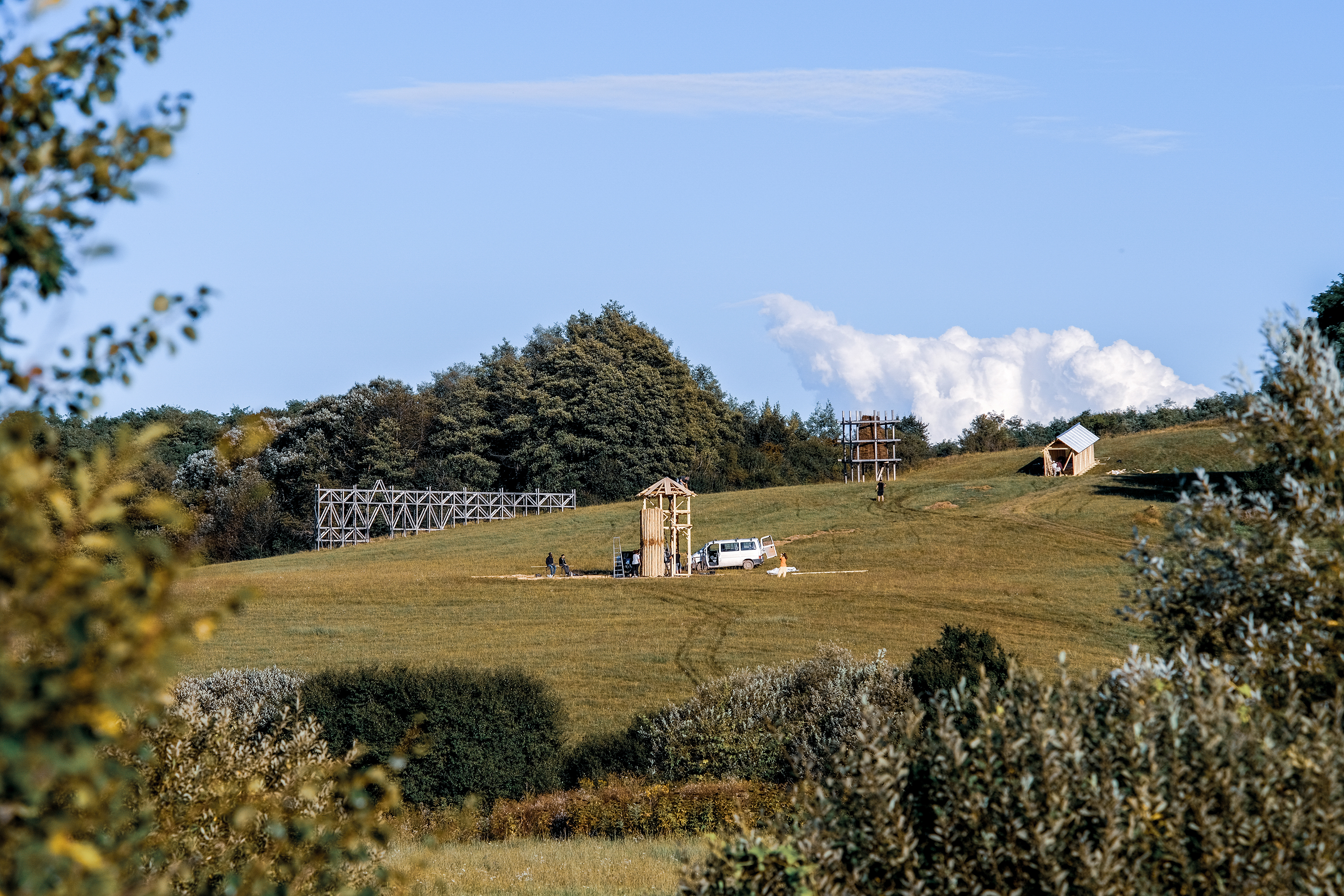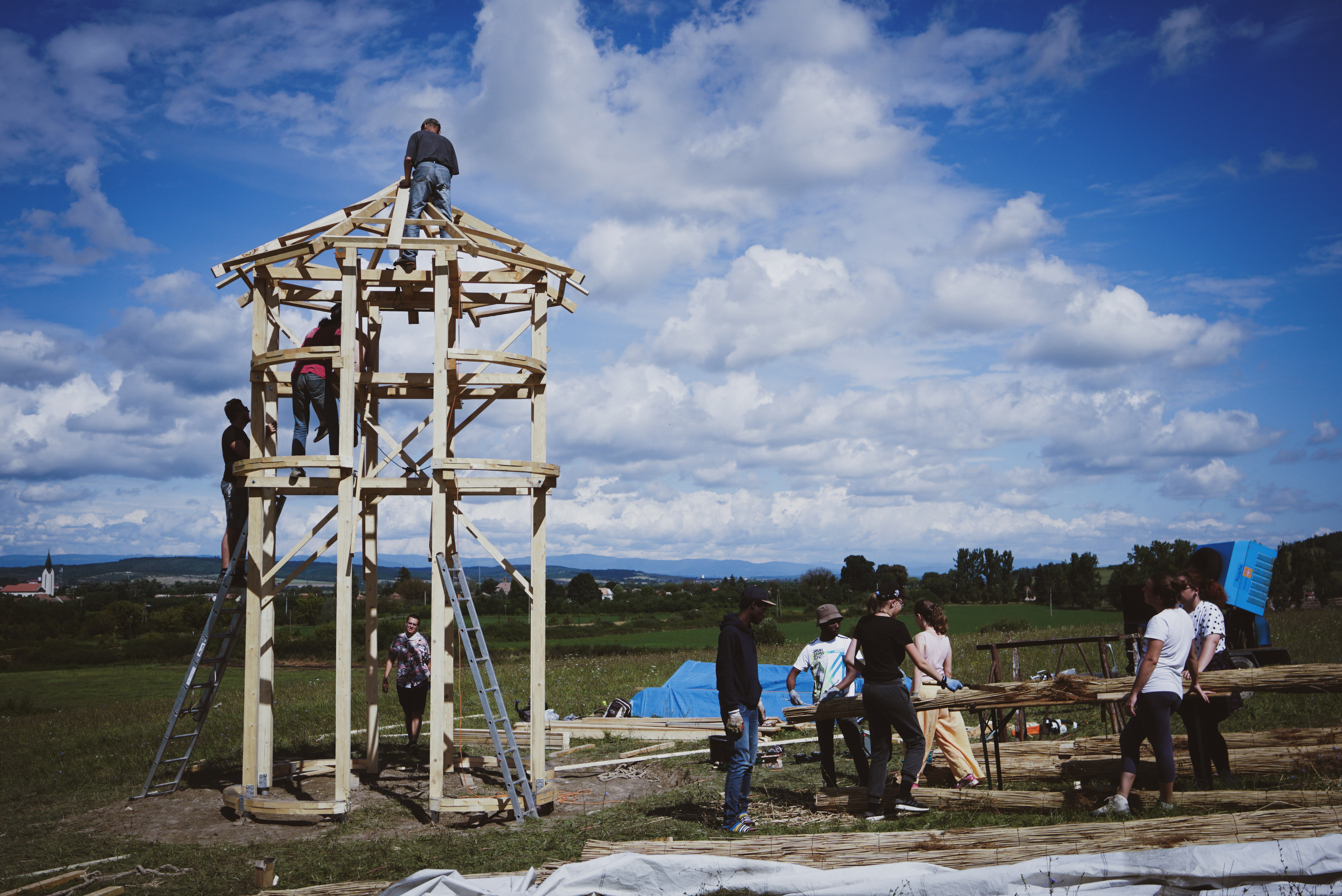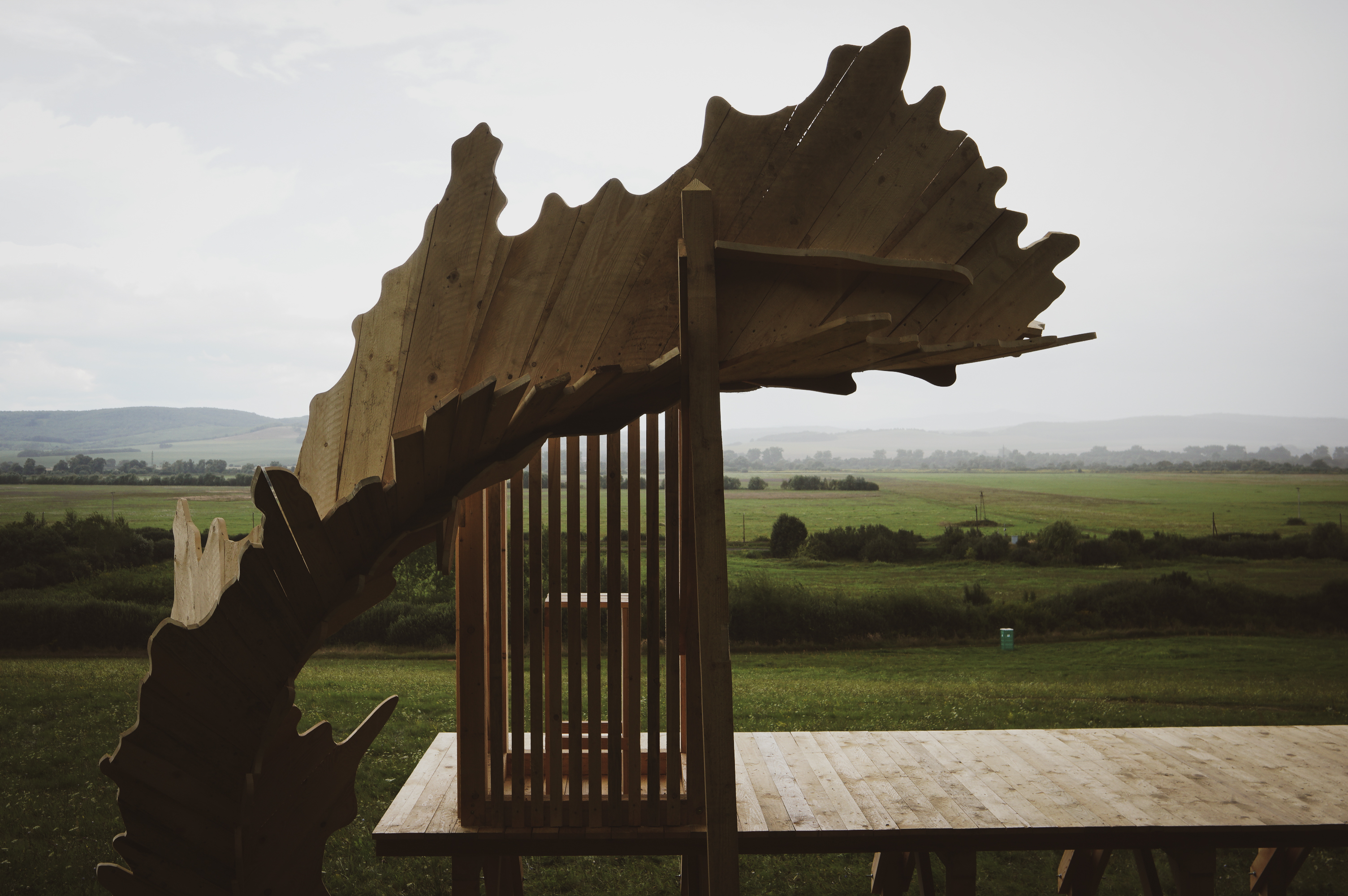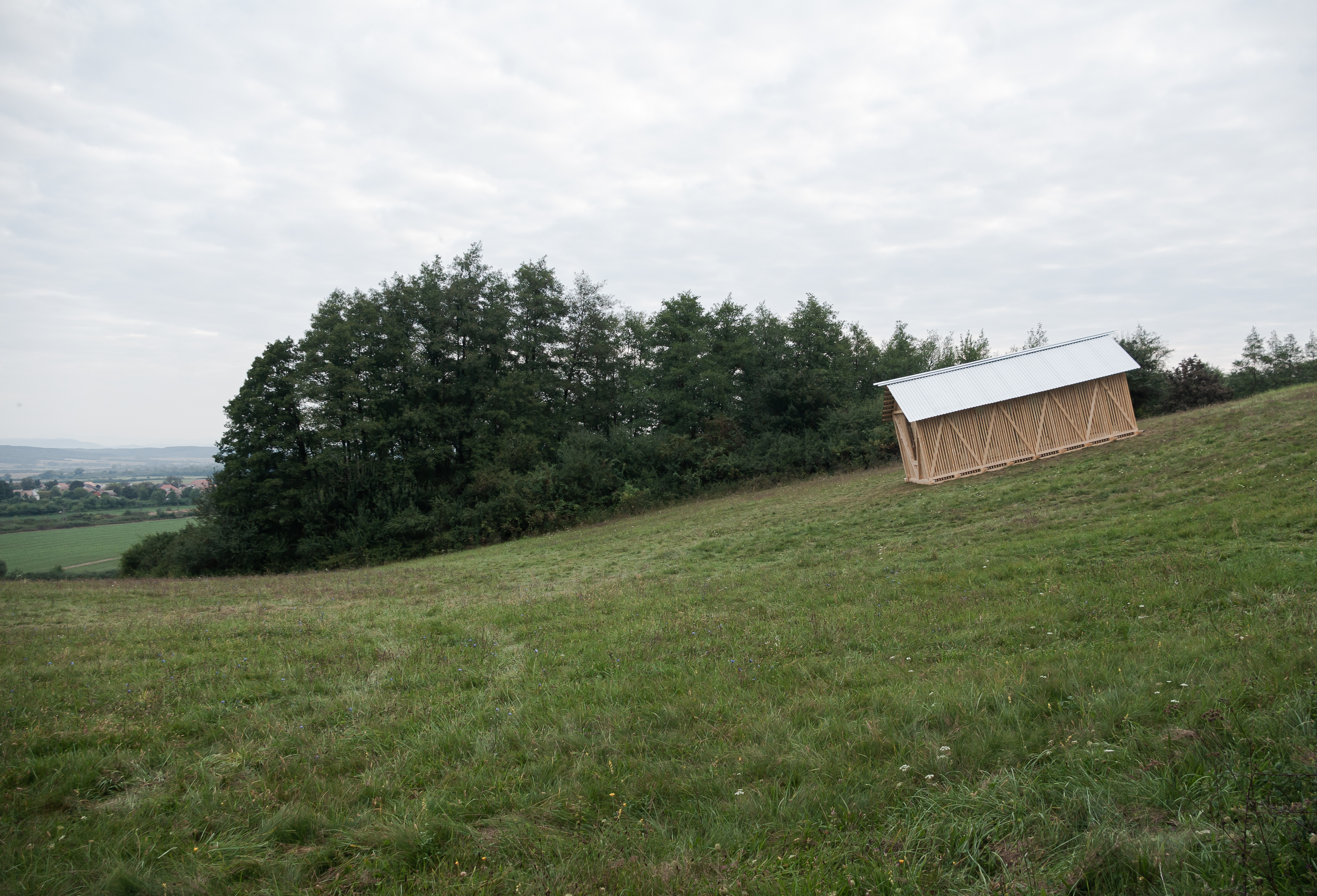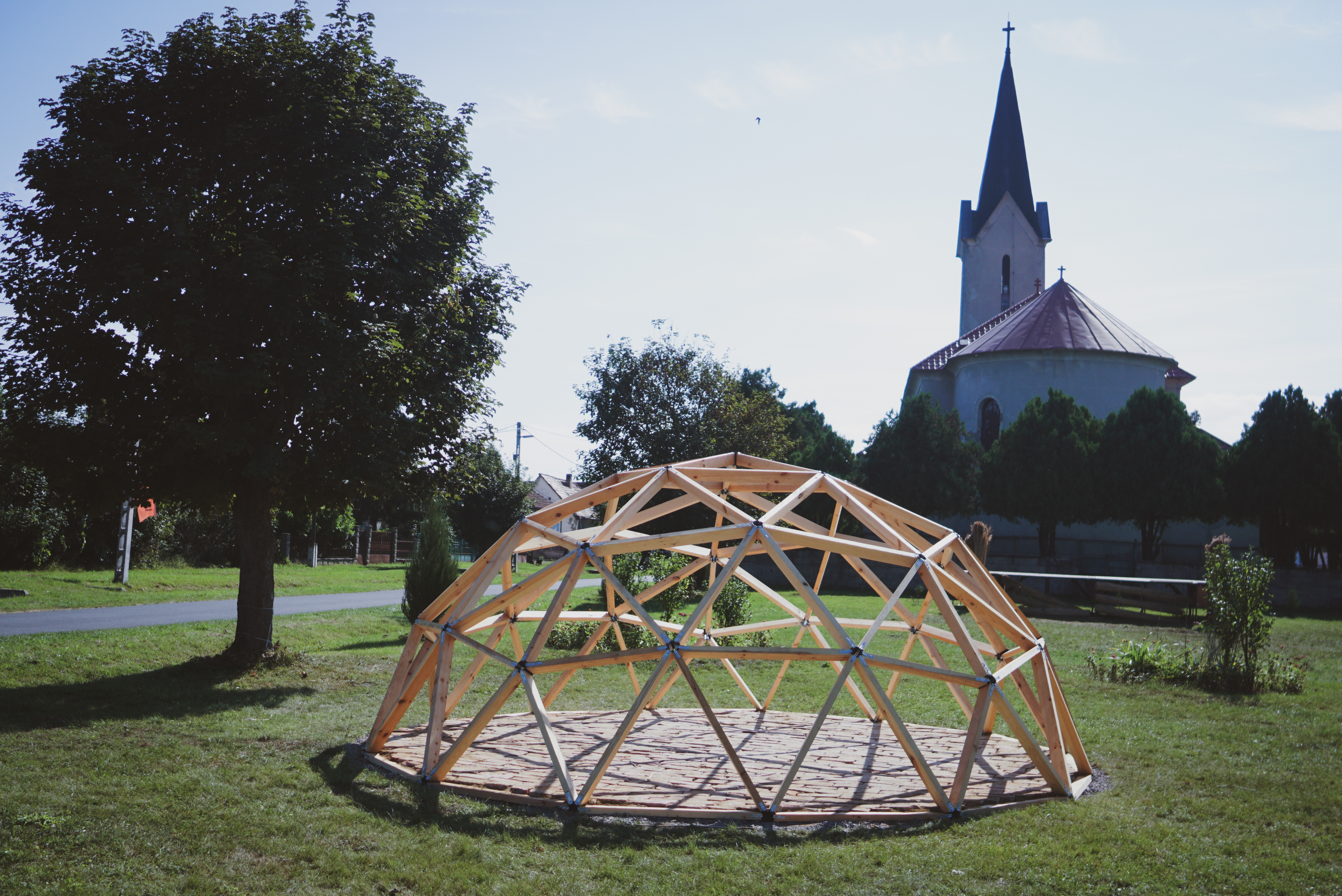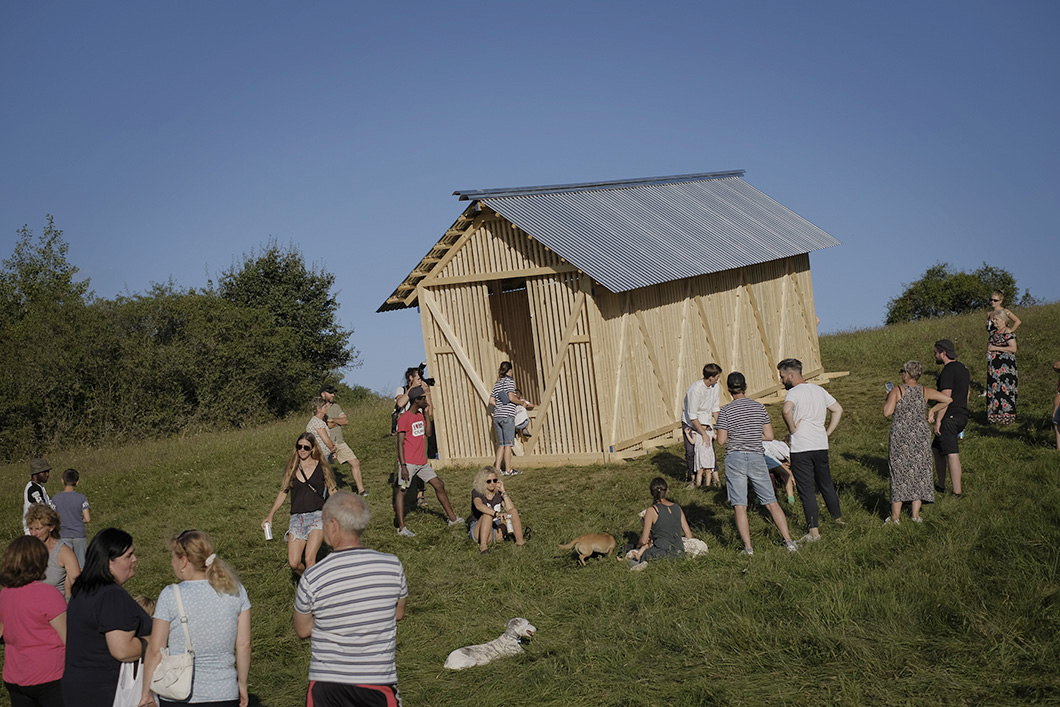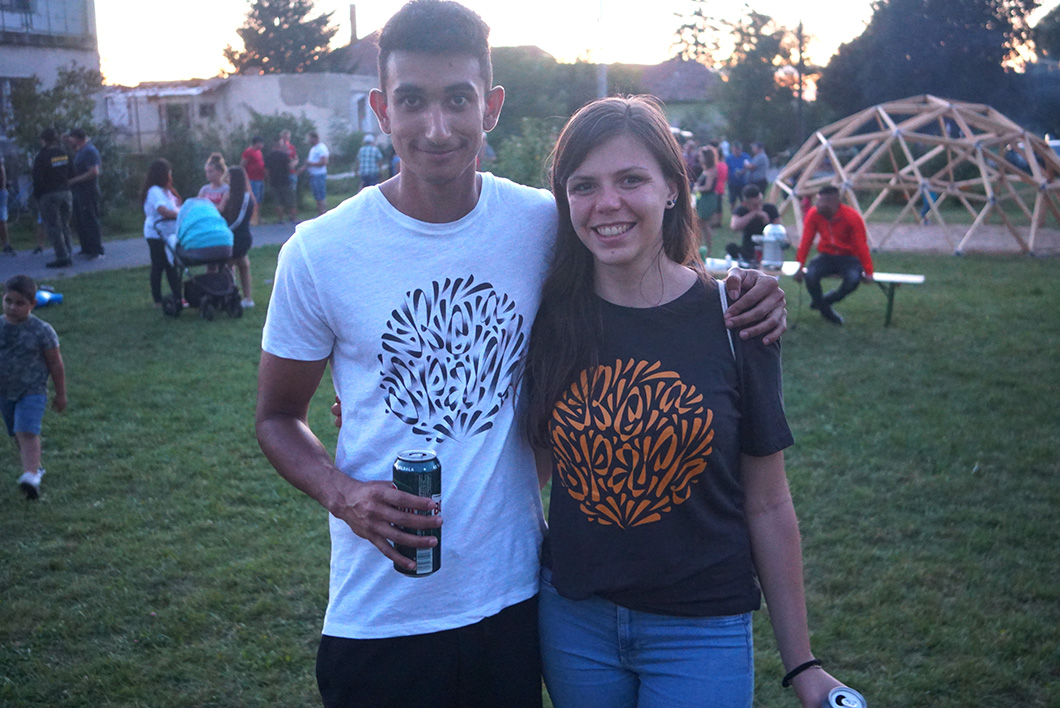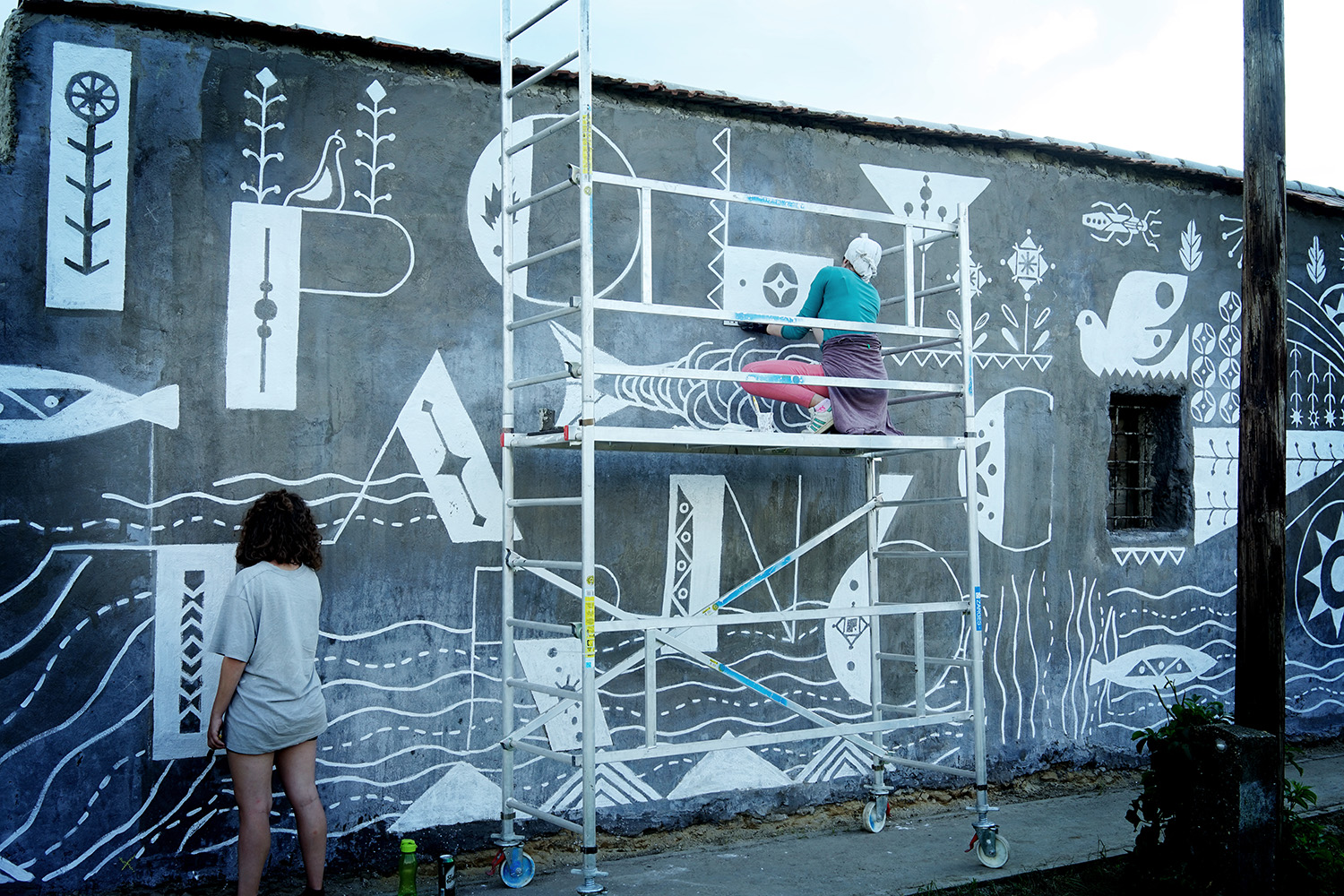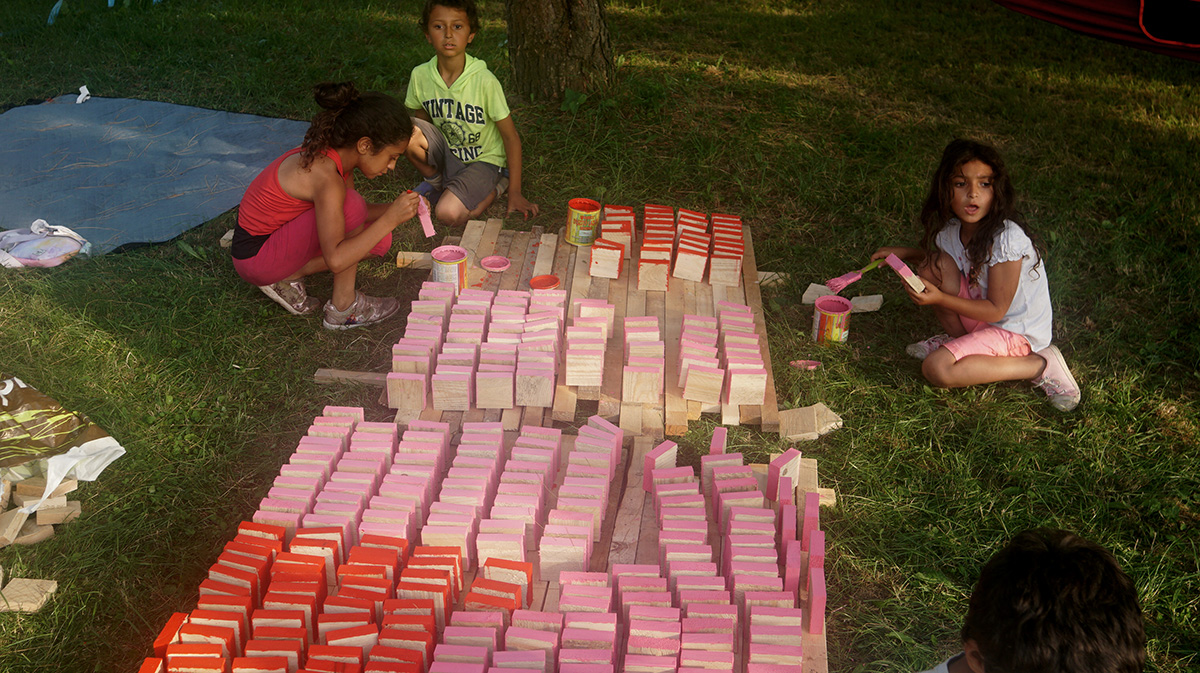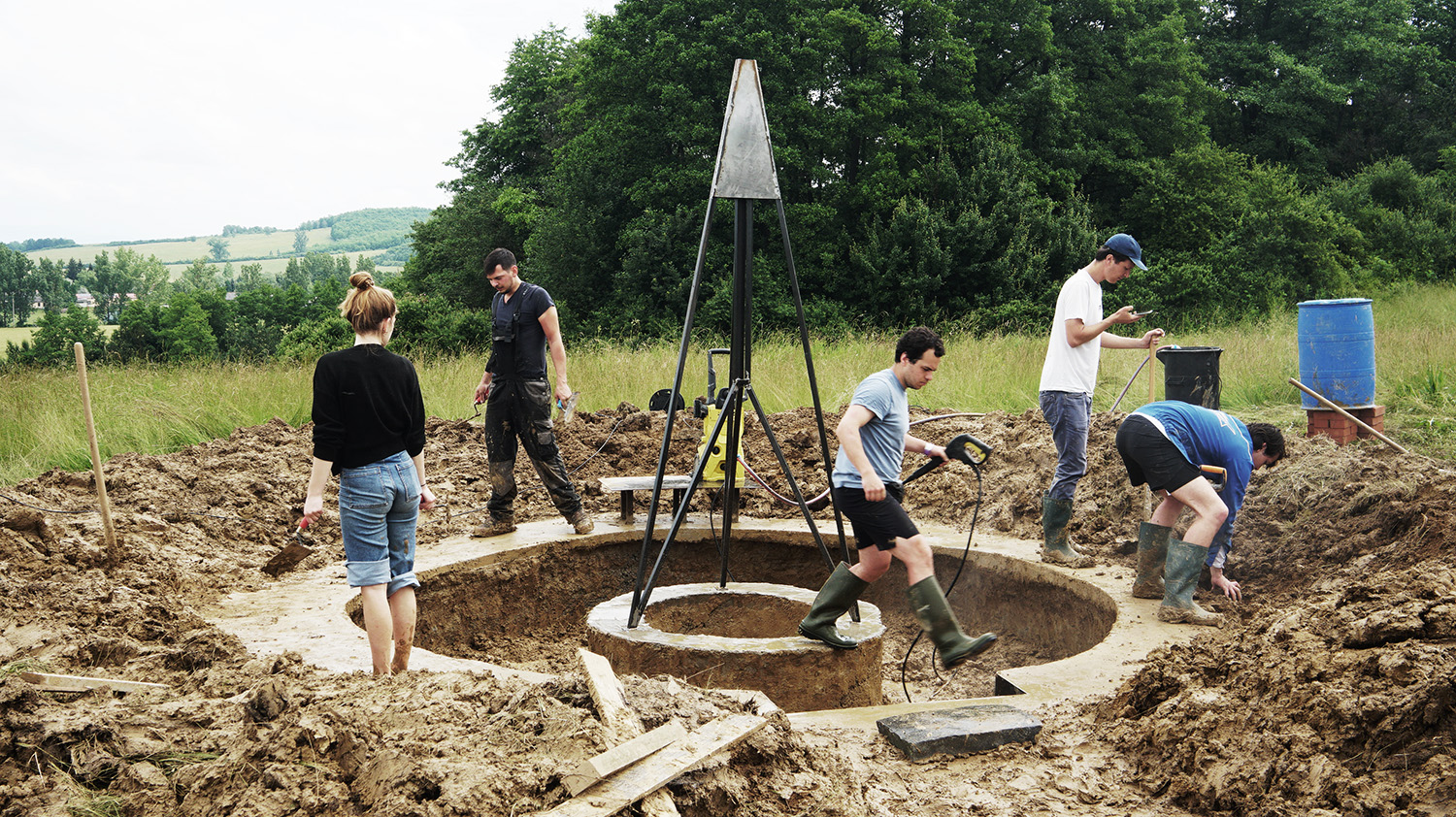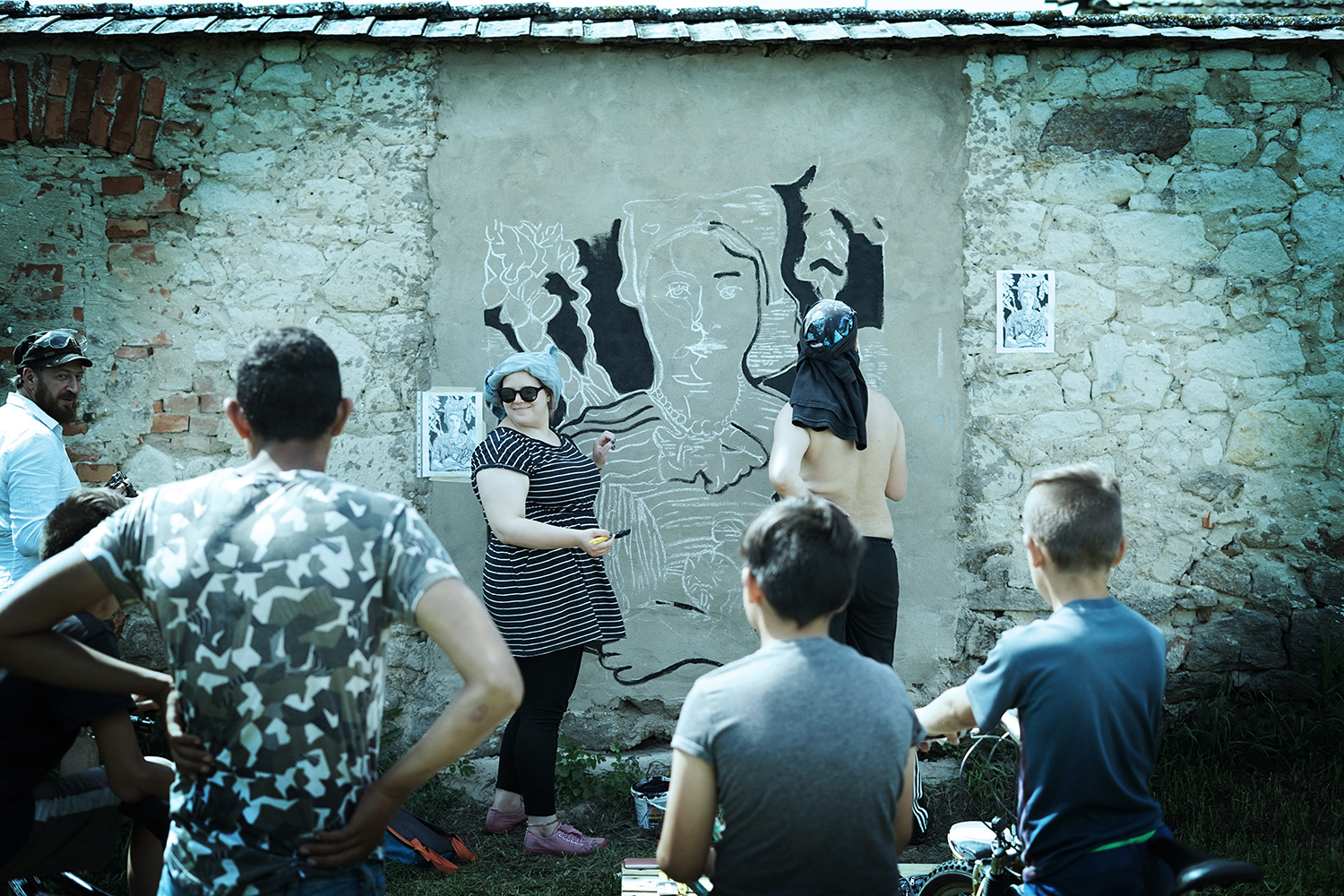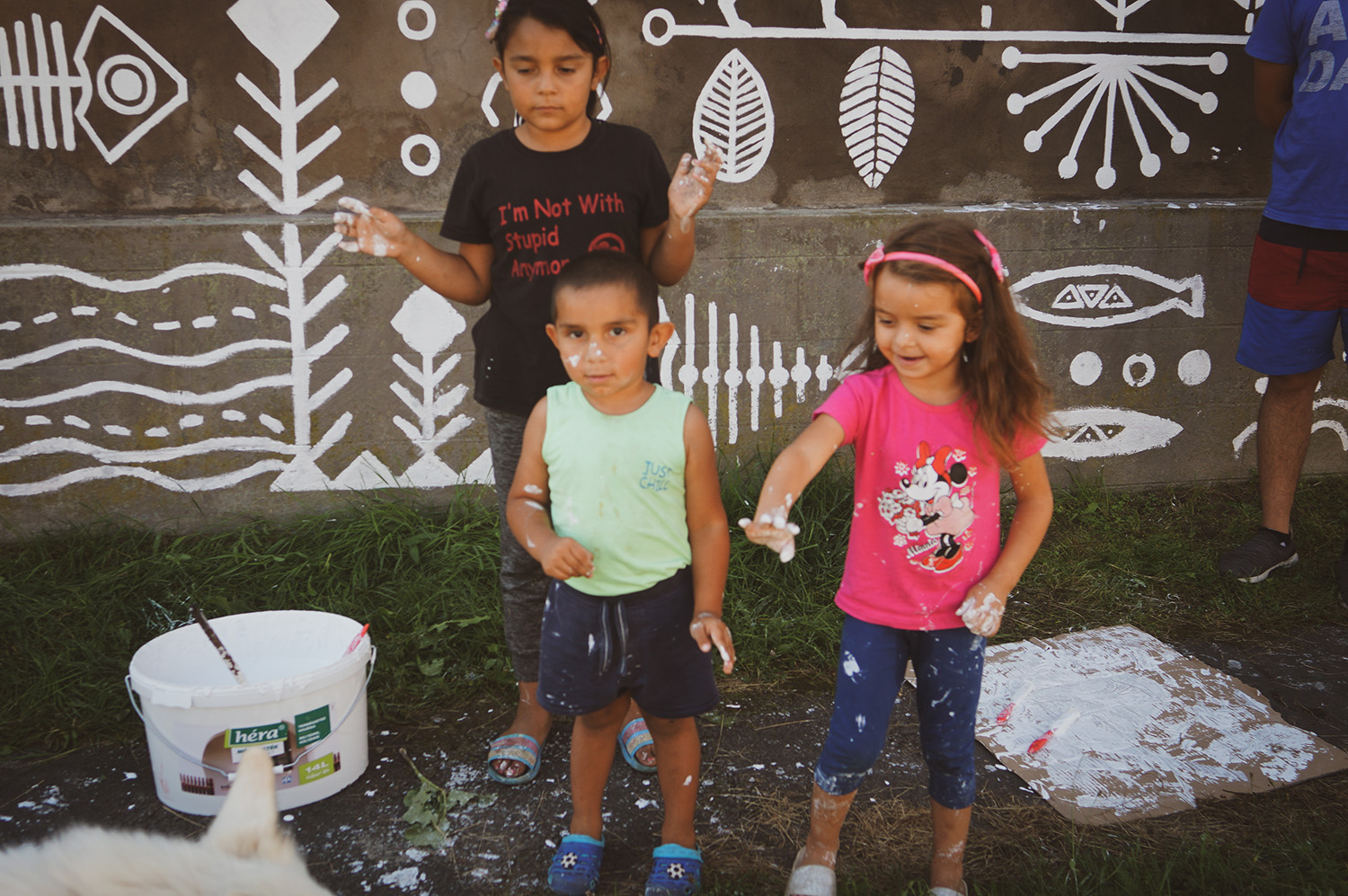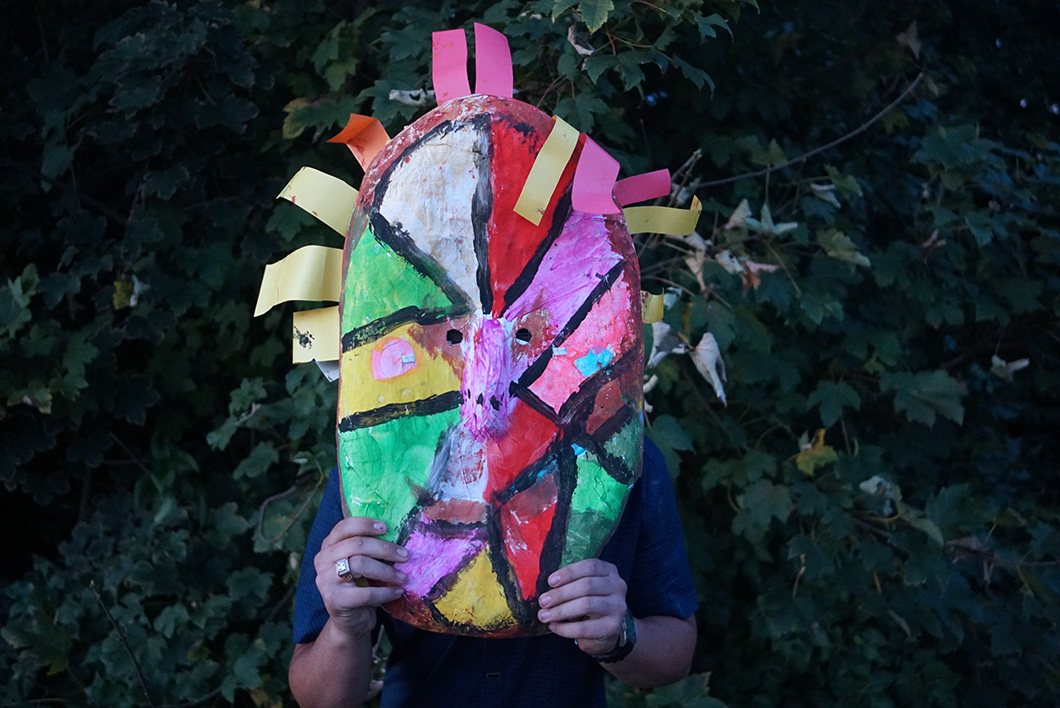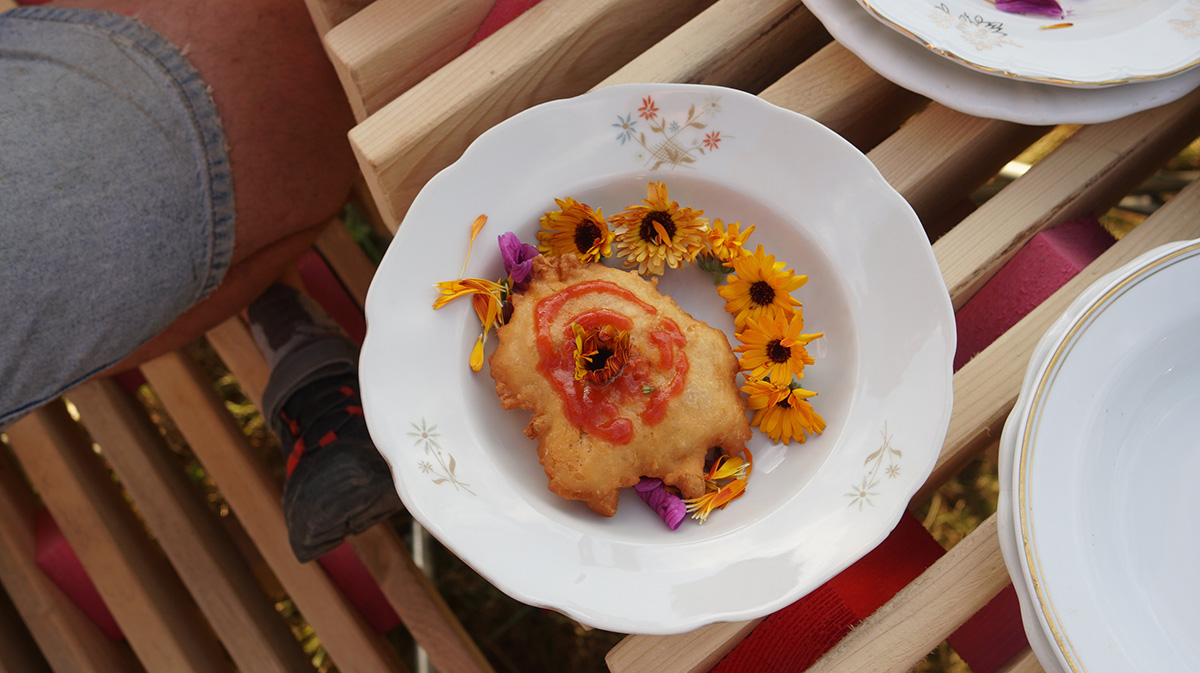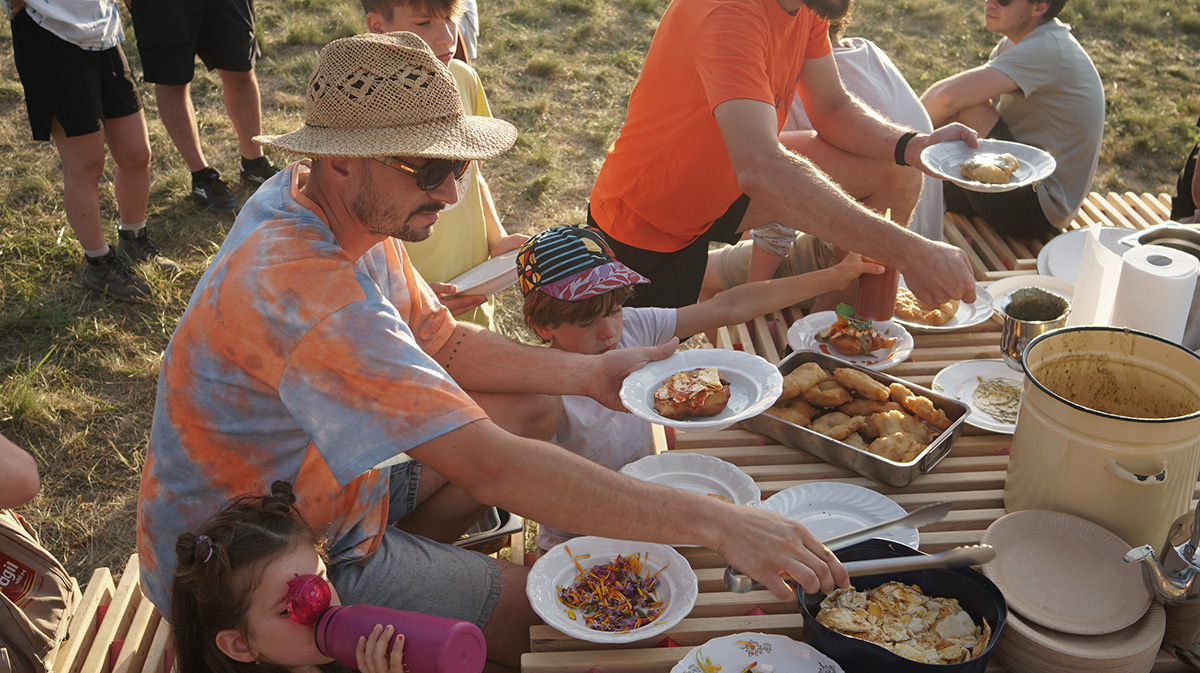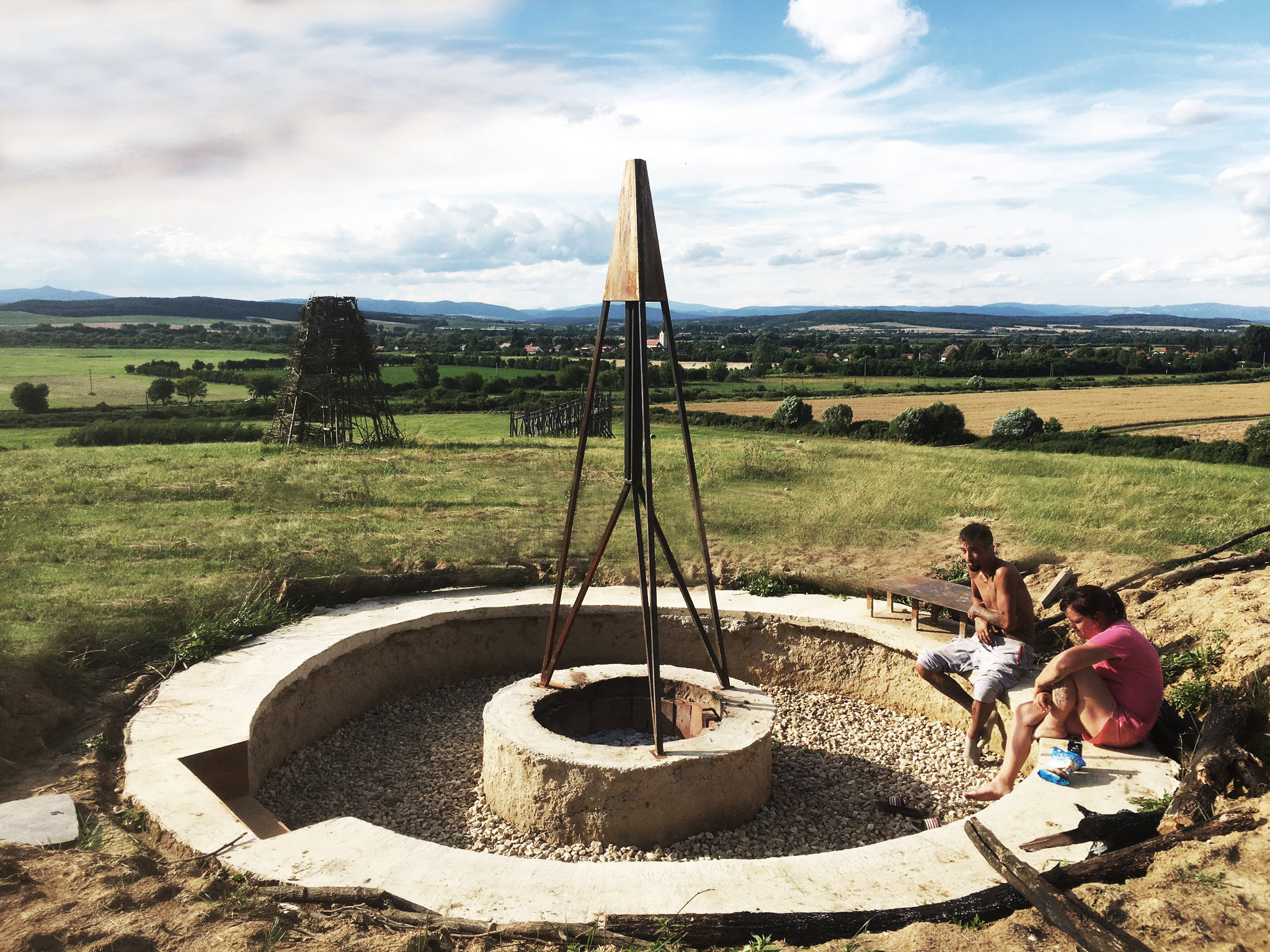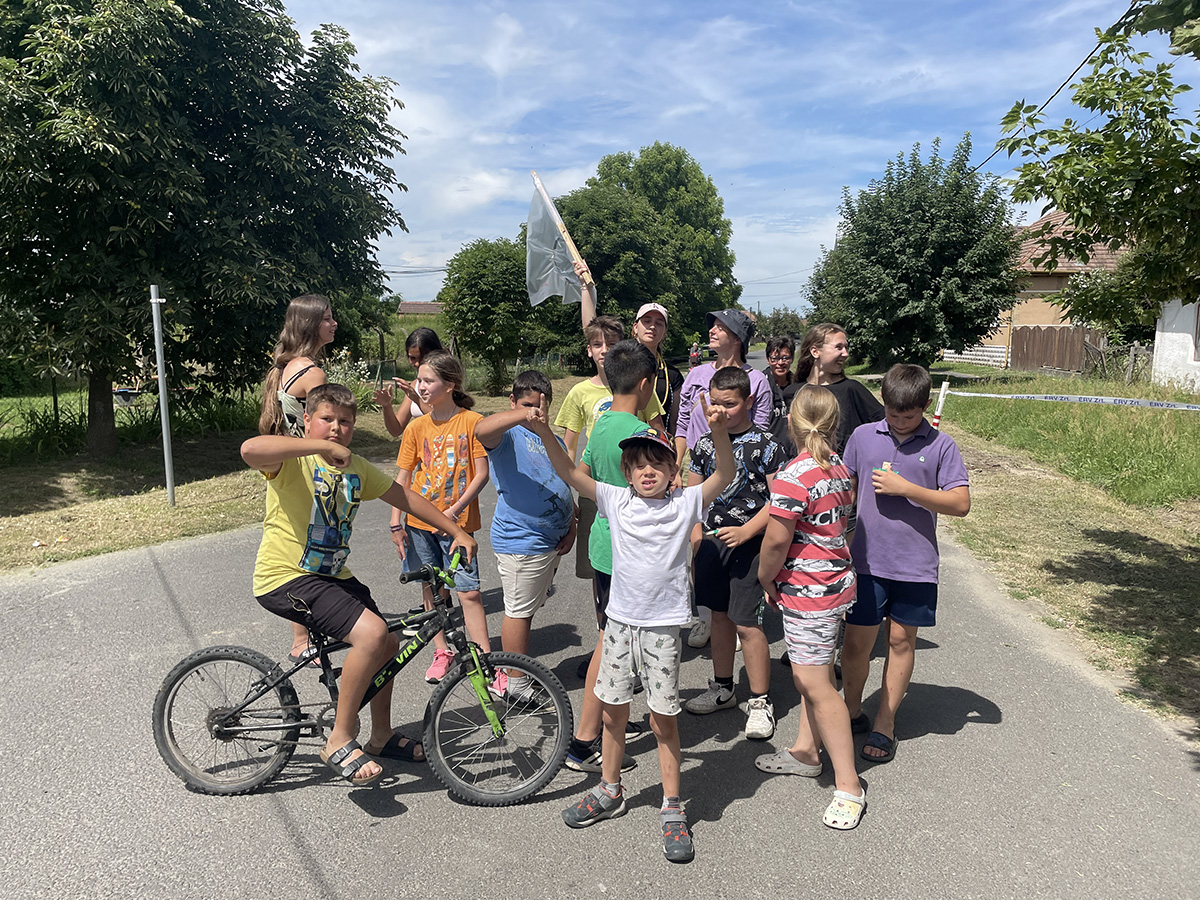Prioritising the places and people that need it the most
Field of Sparks
Field of Sparks Artweeks&Artpark in Ipolytarnóc, Hungary
Field of Sparks is a genre-creating blueprint of change: an interethnic, cross-cultural cooperation and enthusiasm. It is a socio-art project and an open platform for architects, artists, and locals to build and nurture a new narrative around the village of Ipolytarnóc and the CEE region, using art as a common language to create new perspectives on identity, community, and local values.
Hungary
Regional
Nógrád County, Hungary
It addresses urban-rural linkages
It refers to a physical transformation of the built environment (hard investment)
Yes
2024-07-07
No
No
No
As a representative of an organisation
Field of Sparks, as an initiative started in 2018 in Ipolytarnóc, Nógrád county targeting the intellectual vacuum in rural Hungary and the CEE region. Our key ingredients – fight for social justice, enthusiasm towards art and architecture, archaic, simple experiences in nature, the search for beauty, curiosity, and the connection between the seemingly incompatible elements in our society – started boiling. We outlined Field of Sparks in a way, that rural and urban, Romani and non-Romani, artist and non-artist, young and old, privileged and underprivileged people can all find meaning and strength in the activities we do in Ipolytarnóc and our project can have major good impact on the region. We applied for funding in 2018 for the first time at the International Visegrad Fund, to organize an annual international Artweek where we invite rising star architect- and artist groups, universities, and the locals of the region to participate in our programs, including design and building activities, roundtable discussions, theatre, musical performances, and film screenings. In the last 6 successful years, we developed the Artpark and built 13 large-scale experimental architecture pieces in our park, each of them balancing functionality, aesthetics, and community goals. Creating art is an identifying moment in people’s lives, something they can be proud of and have a sense of belonging, with a major impact on their mindset, daily life, and rituals. We aim to sensitize every participant of Field of Sparks to social imbalances, and ethnic differences to encourage a more profound understanding of each other, to create a new kind of reality for the local community, and to aspire to a more tolerant and broad-minded future. We believe that art is a great tool for expanding the intellectual space. By creating a place: the Artpark, a cool factor, we stimulate tourism, gastro and accommodation demands, and service work possibilities.
art&architecture
social justice
inclusivity
nature&human connection
cultural heritage
Field of Sparks integrates sustainability through experimental architecture and art, community engagement, and ecological responsibility. By collaborating with local communities, artists, architects, and universities, the project creates a dynamic space where environmental, social, and cultural sustainability converge. The Artpark prioritizes eco-friendly construction using natural, recycled, found and locally sourced materials to minimize its carbon footprint and preserving the original agricultural function of the land while exploring alternative building techniques like earth-based structures and low-tech methods. Social sustainability is fostered through community-driven development, where Romani craftspeople contribute their skills, gain economic opportunities, and engage in cross-cultural exchange with artists and students. By serving as an open-air learning hub, the park enables universities and research institutions to experiment with sustainable architecture while also functioning as a public space for dialogue, workshops, and artistic performances that promote inclusivity. Art becomes a medium for raising awareness about sustainability, inspiring discussions on environmental stewardship and alternative ways of living harmoniously with nature. Long-term community involvement ensures the park remains a lasting, meaningful space, demonstrating how creativity, sustainability, and social collaboration can shape a more resilient and inclusive future.
We believe that well-designed, beautiful things have transformative power and create important places, so we wrote “Art changes everything” on our flag for a reason. Besides of the large-scale installations of the Artpark (https://www.fieldofsparks.art/artpark), we developed a contemporary visual vocabulary of graphics based on local heritage, spiced up with elements of flora and fauna, geology, cultural superstitions and stories and we started to display these compositions on the walls of the village and its region. (https://www.fieldofsparks.art/walls) We think that every individual is special and unique and deserves transformative moments, and a close encounter of beauty. In practice: access to live and direct experiences, see good examples and learn best art practices, get inspired, get involved freely, and build a useful network. We are implementing the following principles in our work: 1. consistency is more important than perfection, 2. the life lessons always live in action,3. words are powerful, we use them wisely,4. decisions from a place of love not fear,5. overthinking can not be solved by more thinking. We see the solution for many of our targeted challenges in simple, free creative processes, which deliver inclusive, elementary, and even life-changing experiences. We strive for functional aesthetics in our experimental architectural and social work, so besides inspiration, technical and practical skills can be learned during our activities. The final pieces at Field of Sparks can be played with, jumped or climbed at, the pieces always have a purpose, a new perspective, a new social function embedded in them. We are building a versatile program for the genre-creating initiative we call „art for social justice”, where artistic interventions are made with a higher purpose on the sensitive minefield of social inequalities and discrimination in Central Eastern Europe.
From the very beginning of Field of Sparks, we deleted the double standards and simply considered our local, organizer, and participant teams as ‘WE’, in communication, vocabulary, and on real-life occasions to make everyone feel inclusive, who is willing to give time, talent, ideas, work, equipment to the project. Learned helplessness, substandard living conditions, limited life prospects, and the negative influence of mainstream media all contribute to families remaining stuck in survival mode and perpetuating cycles of trauma. We aim to disrupt this status quo, where life is viewed as a predictable and hopeless struggle. We create an imaginary gate, leading to a place, where social discrimination based on race, ethnicity, gender, wealth, status, education, and age is non-existent. We provide a safe ground for artists and locals to have an insight into the social stratum of each other, where laws of life outline very different worlds. Artists whom we invite to participate are all pioneers, eager to make a change, young, fresh, highly professional, and rising stars in their field. The urban art scene is inspired outside of their comfort zone in a new location. They participate in a well-organized, intense, yet unbridled creative process with a strong spiritual charge that is not available in their everyday life. With our initiative, we open up the world to the local vulnerable community, creating opportunities for participation and employment through the use of local services. Our events are free of charge for all, we only use locally sourced, or reclaimed, sustainable materials. Participants of the Artweek and every other activity are invited without a charge to take part in the process and yet learn about a value system we represent, where simple, task-based activities, quality human connections, and rational, considerate, low-key life decisions are leading to a good life.
Field of Sparks’ core principle has always focused on the social impact through artistic practices. Before every action we’ve taken, we ask the question “why?”a million times, until we find a satisfactory answer on the edge of challenge, function, meaning, and beauty.Our activities in Ipolytarnóc always require groups of locals, involved in well-paid service work (such as community organizer tasks, maintenance work, cooking, cleaning, etc.) and volunteer work such as brainstorming, and discussions about local possibilities and needs. In every art-related activity throughout the project, we emphasize skill-sharing and provide an open platform for anyone to join, learn, and practice regardless of the participant’s experience level. From the very beginning of the project, we aimed to build a good reputation for the village and put it on Europe’s cultural and art map, since villages like Ipolytarnóc are mostly never heard of only because of their underprivileged state, poverty or natural disasters (the flood of River Ipoly). Locals of the region recognized the Artpark’s “cool factor”, something to be proud of and something to use as a free location. The area of the Artpark became a destination, a place for friendly gatherings and family events, the installations are used for a wide range of activities, from stargazing to open-air sleeping, cooking around the fire, and even for occasional wedding ceremonies. Besides of the practical involvement, we believe it is equally important to grow the intellectual space for the participants of Field of Sparks. Theatre plays, contemporary dance performances, animation-, documentary film screenings, discussions and talking circles around the fire, and simply the presence in each other’s lives are all crucial elements of getting to know each other and getting a better understanding of what is evident in different layers and bubbles of society. This project is led by curiosity and focuses on similarities, rather than differences.
Field of Sparks has the International Visegrad Fund as its main financial stakeholder, whose support has to be applied for annually. Mostly we establish cross-border cooperations with the surrounding countries in our region. In the last 6 years, (2019, 2020, 2021, 2023, 2024) we worked hard to overachieve our goals and planned deliverables in our application to get more chance for the continuation of the support the following year. We have a few smaller, private financial supporters, who help us organize our programs year by year. We, as an NGO put a great effort into operating with a core team of experts in art direction, design, architecture, and management volunteering their time to shape this project regardless of its financial state. We believe, that by focusing our energy on such an altruistic, impactful, giving, challenging, and satisfying project, we can create a good example through our attitude and values and encourage more transformative projects in our region and worldwide to raise the standard of cultural and art events in these deprived regions. We built an extended network of intellectual property stakeholders, including groups of artists, architects, university teachers, local enthusiasts and students, and the involvement of educational institutions, and local municipalities to strengthen our project’s presence on the cultural map of the CEE region. We aim to extend our network even further to a wider international level exceeding the surrounding countries. Year by year we strongly rely on the involvement of the local communities, since we think our project’s number one aim is to share knowledge, teach skills, create a sense of belonging, and inspire in a non-colonizing way.
We believe, that “Art changes everything”. Access to art has long been intertwined with social status, reflecting and reinforcing existing inequalities. Historically, elite classes have had greater access to artistic education, galleries, and high culture, while marginalized communities often face systemic barriers to artistic participation. Pierre Bourdieu, in Distinction: A Social Critique of the Judgment of Taste, argues that cultural capital—knowledge, exposure, and appreciation of the arts—is often inherited and used to maintain social hierarchies. Expanding art accessibility not only fosters creativity but also challenges class-based divisions, making culture a shared experience rather than a privilege of the wealthy. In the Field of Sparks initiative, we democratize art and celebrate the line: “Joy’s soul lies in the doing”(Shakespeare). In our work, we are always looking for the fine line between beauty and functionality and aim to give new perspectives of understanding, widen the range of interpretations, and encourage the shift of the frameworks for everybody involved in our processes. We focus on the interconnectedness of different professional fields, like art, architecture, performance art, graphic design, and mural painting, while we invite everyone to participate and see our programs as skills-sharing opportunities.
In recent years we saw the most surprising combinations, where our local Romani friend temporarily joined a famous rock’n’roll band as a drummer, young local kids performed fantastic wall paintings for the Bükk National Park, or physical workers participated in theatrical performances and held photo exhibitions of their own photos. The emphasis of the involvement is on the process itself, while we make sure that the outcome is softly curated in a way that it is satisfying and pleasant.
In recent years we saw the most surprising combinations, where our local Romani friend temporarily joined a famous rock’n’roll band as a drummer, young local kids performed fantastic wall paintings for the Bükk National Park, or physical workers participated in theatrical performances and held photo exhibitions of their own photos. The emphasis of the involvement is on the process itself, while we make sure that the outcome is softly curated in a way that it is satisfying and pleasant.
We started Field of Sparks, because we wanted to create a new genre, we call socio-art, where the “cool factor” of an urban art scene can be established in a rural area in need, with long term goals about artistic and social impact in a non-invasive way. The innovative character of our project is the value system we apply to every part of Field of Sparks: 1. Transparency: Clear and honest communication. People trust what they understand, so being transparent about processes, and intentions helps reduce skepticism. 2. Inclusivity: All voices are heard and considered. We never refer to locals as “multiply disadvantaged communities”, not even in applications or presentations, “we” means everyone, who works in this initiative, we use our words carefully. When people feel represented, and invited, especially marginalized groups, trust is more likely to develop. 3. Consistency: We show a pattern of reliable, fair behavior. When actions align with promises over time, trust builds organically. 4. Empathy: Understanding different perspectives, particularly from those who feel excluded or disenfranchised, helps build bridges, connections, and mutual respect. 5. Collaboration, Community Engagement and Playfulness: When people have a stake in the outcomes, they're more likely to trust the process and its leaders. 7. Long-term Commitment: Trust isn’t built overnight. It requires ongoing effort, and it’s essential to show a sustained commitment to the well-being of the whole society.
Throughout the years we made several observations about the destructive cycles of communities living in rural areas of the CEE region. Unmotivated youth with low self-awareness and self-esteem, the perpetuation of destructive generational life patterns, a lack of curiosity and hunger for knowledge, baseless fears of nature, limited practical skills, and a preference for horizontal over vertical thinking, stemming from the neglectful lifestyles associated with poverty are a few of these observations. Our platform remains open to all who wish to contribute their time, skills, ideas, support, and care to participate in a project they can be known for as a place and community and be proud of. As a methodology, we aim to involve the youth, but also put emphasis on the participation of the adults to inspire them to become rolemodels of curiosity and openness. Participants of our programs find themselves out of their comfort zone for different reasons. We find great value in building bridges between the seemingly incompatible attributes of: urban - rural, young - old, deprived - priviliged, non-Romani - Roman, academic - practice-based. We have 2 main different approaches in our methodology: 1. Participants have a design phase based on an Artist’s brief (as a semester project for credits, if our partner is a university), where they do field trips to the site, discussions and debates with the local team and then they do the building phase on the Artweek together 2. Everything happens on-site, the program starts with a Circle of Knowledge for 3 days, where storytelling, brainstorming and modeling happen, followed by 5 days of building. The first method requires more preparation concerning materials and tools and the outcomes are precise and highly technical. The second method focuses more on the human connection and soft skills, where materials are reclaimed of found in nature and the outcomes are rather poetical, and metaphorical.
Field of Sparks offers a highly transferable model for community-driven artistic and architectural engagement, which could be adapted to other disadvantaged regions worldwide. Its key elements—experimental architecture, interdisciplinary and interethnic collaboration, and local community involvement—can be replicated in various contexts by bringing together artists, architects, universities, and local communities to co-create public spaces. The participatory approach, particularly involving the Romani people, fosters cultural exchange, empowerment, and social inclusion, which could benefit other marginalized groups, such as Indigenous communities or refugee populations. The use of open fields or underutilized spaces as creative hubs can be applied in urban, rural, or post-industrial areas, adapting the structures to local environmental and cultural conditions. Field of Sparks's educational dimension, where students and professionals collaborate in real-world problem-solving, can be integrated into university programs globally, connecting academia and social impact. By maintaining its core principles of inclusivity, sustainability, and experimental design, the Field of Sparks model can inspire similar initiatives worldwide, fostering social cohesion through art and architecture.
Field of Sparks is a good example and proof of vertical thinking, where a handful of people with good intentions, an idea and a growing community can create impactful change and demolish the invisible walls of prejudices of the social stratum. We address several pressing global challenges, such as – social imbalances and discrimination, – declining mental and physical health of society, – lost connection to nature (even in rural areas) – horizontal thinking, where the layers of generational traumas repeat themselves, – the lack of experience of creating something beautiful, impactful, and relevant. The project also responds to educational and economic disparities, offering hands-on learning opportunities that empower both students and local participants with new skills. The focus on experimental architecture and sustainable design aligns with global efforts to create resilient, adaptable, playful and eco-friendly environments, particularly in underserved areas. Also, by transforming a field into a vibrant creative space, the Artpark (while leaving it’s original agricultural function untouched), the project addresses urban and rural revitalization challenges, demonstrating how art and architecture can foster community engagement, participatory design, and sustainable development on a global scale. We see the fight for social justice through art crucial because art is beyond language and culture, making complex social issues more understandable, visible and emotionally impactful. Art fosters empathy, mobilizes action, encourages new habits, and serves as a universal language that unites people across borders. Historically, it has fueled movements for civil rights, democracy, and equality, challenging oppressive systems and inspiring collective change. Beyond activism, art also provides healing, strengthens communities, creates a feeling of belonging, and envisions a better future by transforming hardship into hope and pride.
Field of Sparks, as an NGO has successfully created 13 large-scale experimental architecture installations and developed a unique and contemporary graphical vocabulary in forms of public wall paintings in Ipolytarnóc and its surrounding areas, transforming the region into a cultural and artistic hub. These installations serve as both functional and artistic landmarks, redefining perspectives on identity, community, and local values. Direct beneficiaries include the local Romani people, who actively participated in the creative process, gaining artistic, technical, and collaborative skills while strengthening their social inclusion, besides of their much needed and well-paid service work in the projects operational parts. Artists, architects, and university students also benefited by engaging in real-world, hands-on experimentation in architecture and public art, expanding their comfort zone, creative and professional horizons. Indirectly, the broader local community enjoys an enriched public space, a “cabinet of curiosities” attracting visitors, cultural tourism, and new opportunities for social and economic development. The project’s long-term impact includes breaking down social barriers, fostering intercultural and interethnic dialogues, revitalizing the built environment, and inspiring similar initiatives in other regions. In 2024 we started working on a brand concept, producing artistic ceramics made by the local and linked communities of Field of Sparks with the art direction of our crew in order to create a constant source of income on the long term for the Through creativity and collaboration, Field of Sparks continues to empower communities and reimagine public spaces and sites of unity, learning, and artistic innovation.



